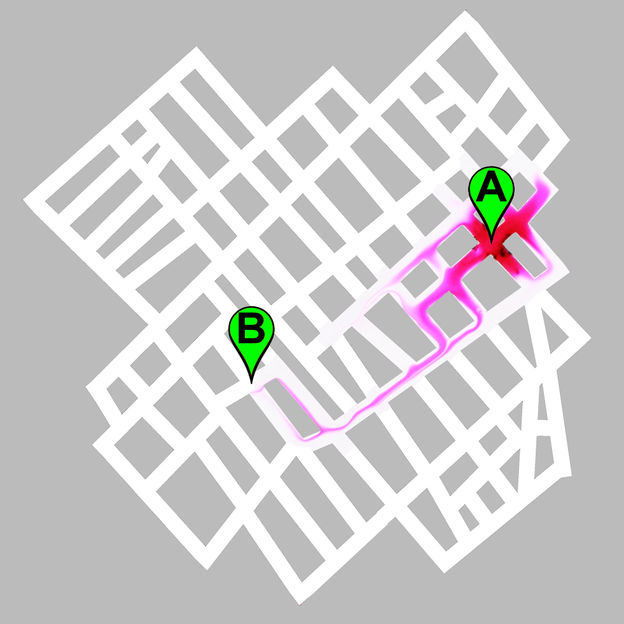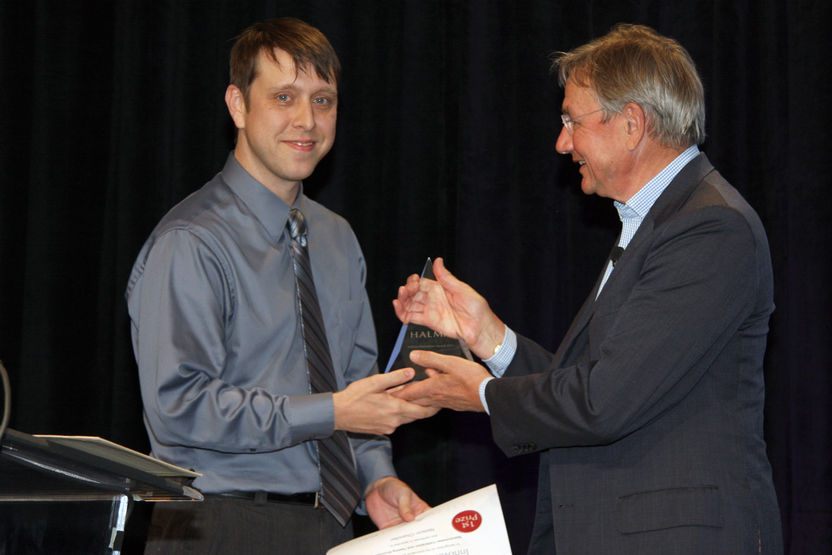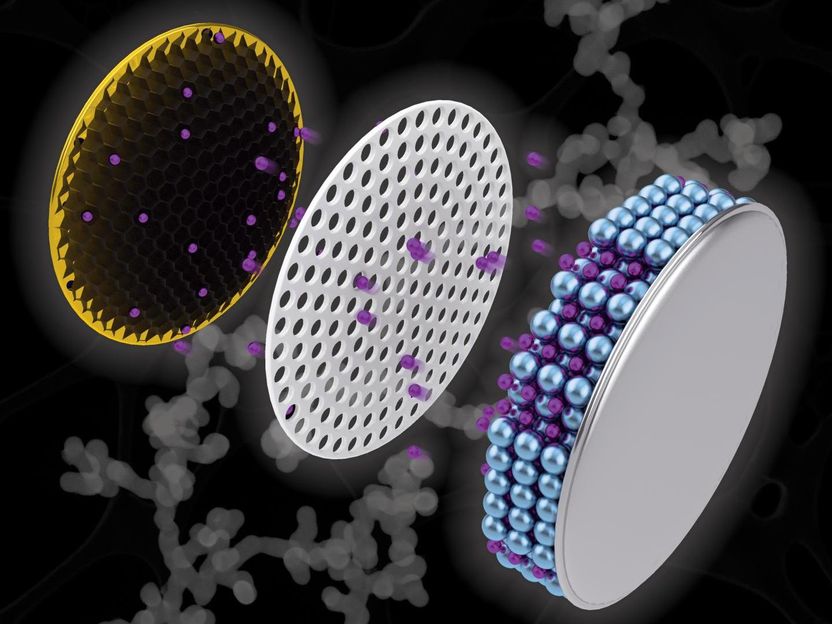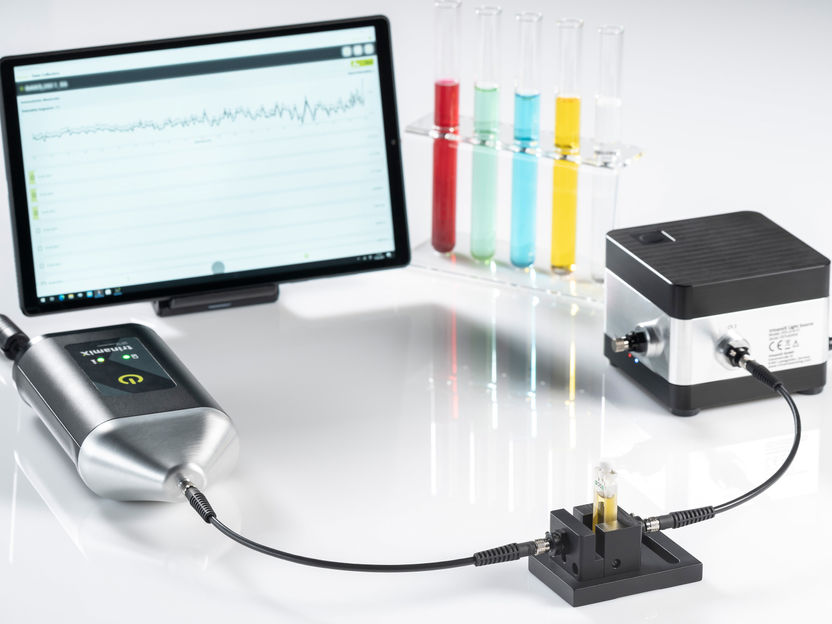A GPS from the chemistry set
Color trail shows quickest route to destination
Empa scientists teamed up with colleagues from Hungary, Japan and Scotland to develop a chemical “processor” which reliably shows the fastest way through a City maze. As the method is basically faster than a satnav system, it could be useful in transport planning and logistics in the future, for instance, as the scientists report in the journal Langmuir.

Empa
You don’t always need GPS, a map or a compass to find the right way. What demands a tremendous amount of computational power from today’s navigation computers can also be achieved by taking advantage of the laws of physical chemistry and practicing so-called “chemical computing”. The trick works as follows: A gel mixed with acid is applied at the exit of a labyrinth – i.e. the destination – filled with alkaline liquid. Within a shorttime, the acid spreads through the alkaline maze, although the majority of it remains together with the gel at the exit. When an alkaline solution mixed with dyes is now added to the other end of the maze, i.e. the entrance, it automatically seeks the way to the exit – the point with the highest acidity.
A handy effect
This process is an example of the Marangoni effect, which works because the acid distributed in the maze reacts with the newly added, dyed alkaline solution. The latter is repelled by the mixture of alkaline liquid and acid in the maze and pushed to the source of the acidity at the exit, leaving a clear trail in its wake thanks to the pigment. In doing so, the dyed alkaline solution tends to opt for the shortest path. In the rush, however, it also takes alternative routes – albeit with a considerably lower probability and thus with a weaker trace of color. “The advantage of this chemical computer over its electronic counterpart is that it finds all the possible routes virtually in parallel. A normal computer calculates step-by-step one possibility after another, which takes longer,” explains Rita Tóth from Empa’s Laboratory for High Performance Ceramics. Although methods to find such pathways using liquids already exist, the new technique is the first that works purely chemically and where a color trail shows the path immediately.
Anyone for pizza?
As the next step, the research team is now looking to attempt larger and more complex mazes, the test object only being a few square centimeters in size. Nonetheless, the method has already passed a test “out in the real world”: In a somewhat larger maze based on a Budapest neighborhood, the colorful alkaline solution traced the shortest route to its target, a pizza restaurant. Eventually, the system could also be used in transport planning. And scientist Tóth also envisages the potential for applications in experimental psychology, network and graph theory and robotics. At any rate, the team’s results have already been met with a great deal of interest; the paper is one of the most read in the journal Langmuir.
Original publication
Other news from the department science

Get the chemical industry in your inbox
By submitting this form you agree that LUMITOS AG will send you the newsletter(s) selected above by email. Your data will not be passed on to third parties. Your data will be stored and processed in accordance with our data protection regulations. LUMITOS may contact you by email for the purpose of advertising or market and opinion surveys. You can revoke your consent at any time without giving reasons to LUMITOS AG, Ernst-Augustin-Str. 2, 12489 Berlin, Germany or by e-mail at revoke@lumitos.com with effect for the future. In addition, each email contains a link to unsubscribe from the corresponding newsletter.
Most read news
More news from our other portals
Last viewed contents

Palpharma Handling Solutions - Chesterfield, United Kingdom

Ocean Optics Employee Wins Global Technology Award - Nelson Chandler takes £20K top prize from multi-national technology company
Industriegaseverband e. V. (IGV) - Berlin, Germany
Uhdenora receives order from AO "KAUSTIK" Kazakhstan

Tornado Spectral Systems, Inc. - Mississauga, Canada

'Nanochains' could increase battery capacity, cut charging time
Bradykinin
WACKER Builds New Pyrogenic Silica Plant in the USA
GPC Biotech Is the First German Biotech Company to Adopt Voluntary Corporate Governance Principles
Siltronic Adapts Capacity for 150 Millimeter Silicon Wafers to Market Demand



























































